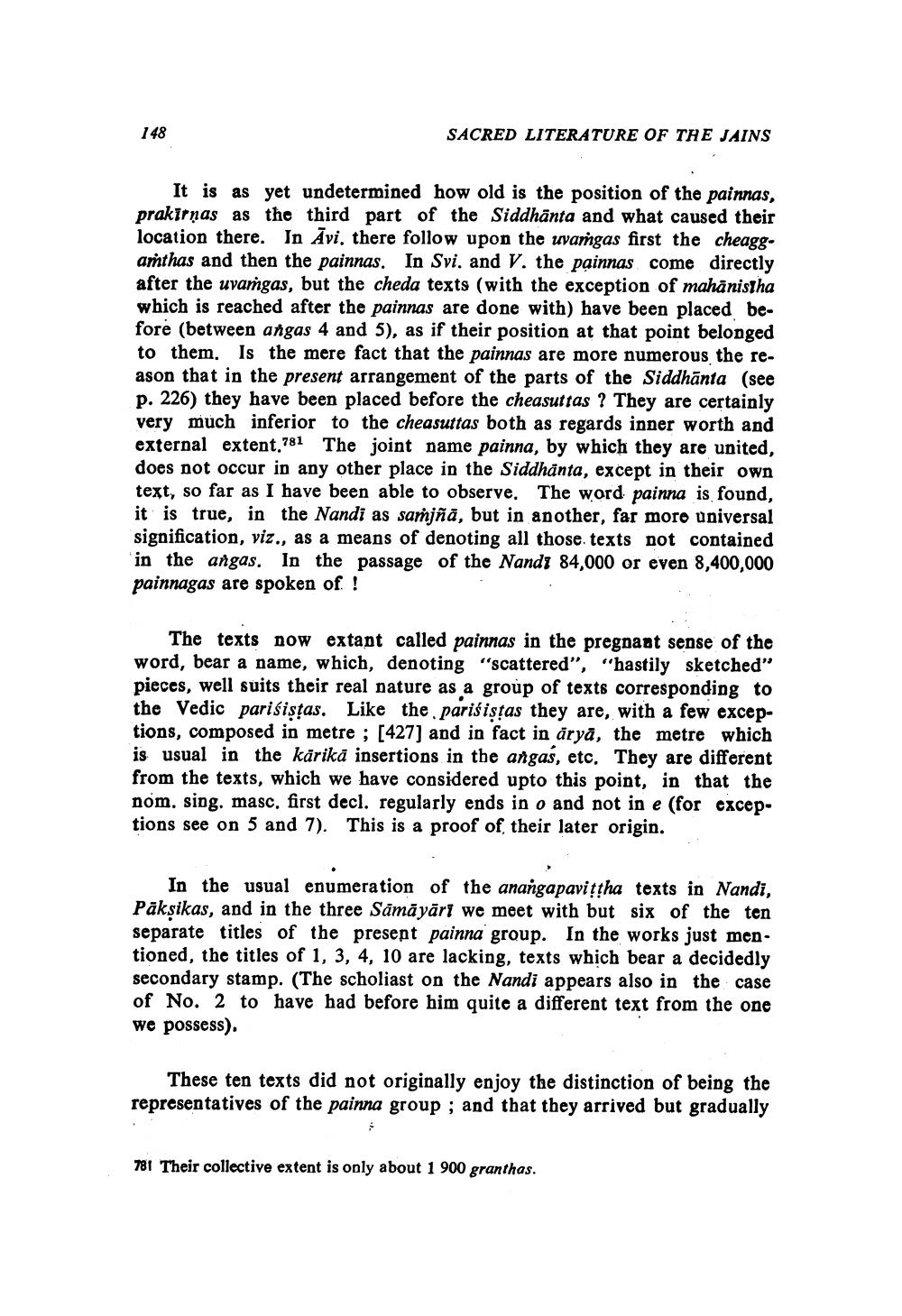________________
148
SACRED LITERATURE OF THE JAINS
It is as yet undetermined how old is the position of the painnas, prakirņas as the third part of the Siddhānta and what caused their location there. In Āvi, there follow upon the uvamgas first the cheaggamthas and then the painnas. In Svi. and V. the painnas come directly after the uvagas, but the cheda texts (with the exception of mahānistha which is reached after the painnas are done with) have been placed before (between angas 4 and 5), as if their position at that point belonged to them. Is the mere fact that the painnas are more numerous the reason that in the present arrangement of the parts of the Siddhānta (see p. 226) they have been placed before the cheasuttas ? They are certainly very much inferior to the cheasuttas both as regards inner worth and external extent.781 The joint name painna, by which they are united, does not occur in any other place in the Siddhanta, except in their own text, so far as I have been able to observe. The word painna is found, it is true, in the Nandi as sarjñā, but in another, far moro universal signification, viz., as a means of denoting all those texts not contained in the angas. In the passage of the Nandi 84,000 or even 8,400,000 painnagas are spoken of !
The texts now extant called painnas in the pregnant sense of the word, bear a name, which, denoting "scattered", "hastily sketched" pieces, well suits their real nature as a group of texts corresponding to the Vedic parisistas. Like the parisistas they are, with a few exceptions, composed in metre ; [427] and in fact in āryā, the metre which is usual in the kärikā insertions in the angas, etc. They are different from the texts, which we have considered upto this point, in that the nom. sing. masc, first decl. regularly ends in o and not in e (for exceptions see on 5 and 7). This is a proof of their later origin.
In the usual enumeration of the anangapavitha texts in Nandi, Päksikas, and in the three Sāmāyāri we meet with but six of the ten separate titles of the present painna group. In the works just mentioned, the titles of 1, 3, 4, 10 are lacking, texts which bear a decidedly secondary stamp. (The scholiast on the Nandi appears also in the case of No. 2 to have had before him quite a different text from the one we possess),
These ten texts did not originally enjoy the distinction of being the representatives of the painna group ; and that they arrived but gradually
781 Their collective extent is only about 1 900 granthas.




